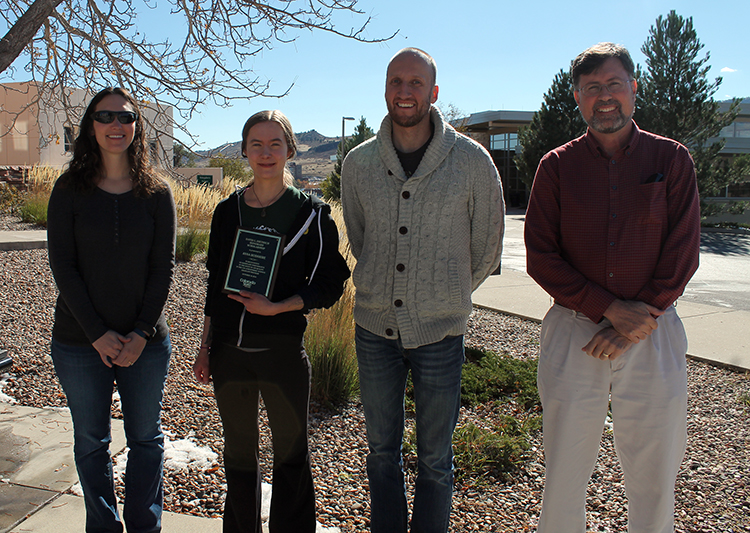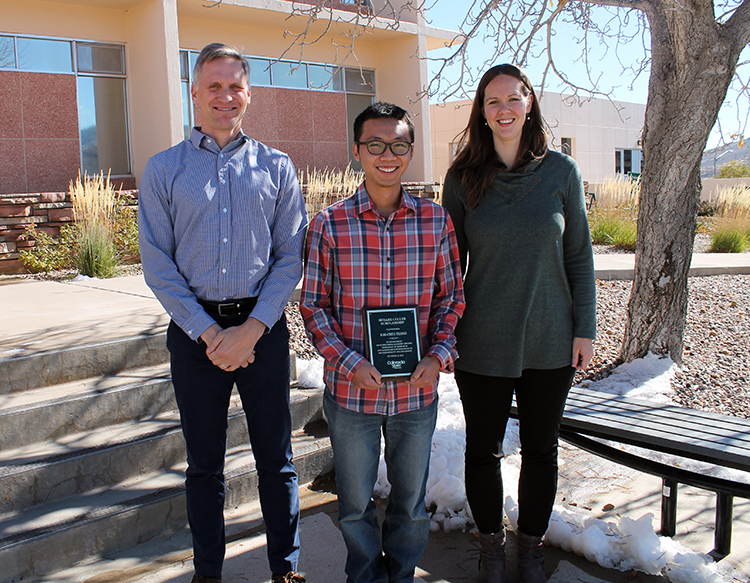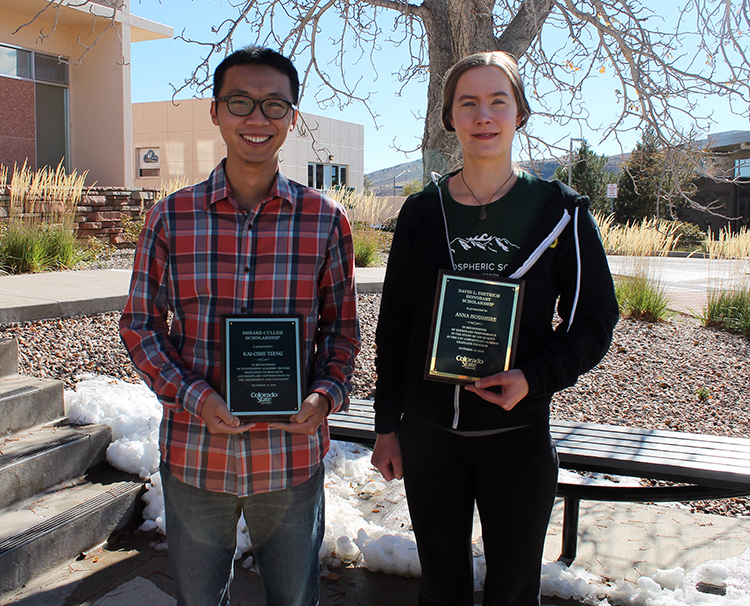Anna Hodshire and Kai-Chih Tseng awarded scholarships
Anna Hodshire was presented with the David L. Dietrich Honorary Scholarship, and Kai-Chih Tseng was given the Shrake-Culler Scholarship in a ceremony Oct. 16. Both recipients were unaware of their selection until the announcements by their advisors during the presentation.
The Dietrich Scholarship, funded each year by Fort Collins-based Air Resource Specialists, Inc., is given in honor of retired ARS President David Dietrich. The award goes to a CSU student who has demonstrated outstanding ability in air quality research and education. Hodshire was nominated by her advisor, Associate Professor Jeff Pierce.
“Anna’s done excellent work on particle formation and growth as well as on the properties of smoke aerosol. She has a great scientific curiosity and work ethic that allows her to excel at many projects. Anna is also growing to be a team leader in coordinating researchers across related projects. I am very fortunate to work with her!” Pierce said after the presentation.
The Shrake-Culler Scholarship is awarded annually to a senior Ph.D. student. The student must have passed their preliminary exam, have a GPA of 3.5 or above, and demonstrate a strong work ethic and enthusiasm for higher education. Tseng’s advisors, Professor Eric Maloney and Associate Professor Elizabeth Barnes, nominated him for the award.
“Kai-Chih is an incredibly creative graduate student. Some of the novel diagnostics he has developed related to tropical-extratropical interactions are now being used by others in the field,” Maloney said following the ceremony.
“Kai-Chih is one of the hardest working and creative graduate students we have had the pleasure of working with. All of his papers have been driven by his curiosity, and I think most of his collaborators would agree that we are just lucky to be along for the ride,” Barnes said. “His work is exemplary, and he has shown no fear in using any tool necessary to test his hypotheses. Since arriving, he has utilized reanalysis, climate model output, ECMWF forecast system hindcasts and an idealized model (i.e. a linearized baroclinic model).”

Joe Adlhoch, right, and Jessica Ward, left, from Air Resource Specialists, were on hand for presentation of the Dietrich Scholarship to Anna Hodshire, second from left, on Oct. 16. The scholarship is given in honor of retired ARS President David Dietrich. Hodshire’s advisor, Jeff Pierce, second from right, nominated her for the award.

Kai-Chih Tseng, center, was nominated for the Shrake-Culler scholarship by his advisors, Eric Maloney, left, and Elizabeth Barnes, right.



